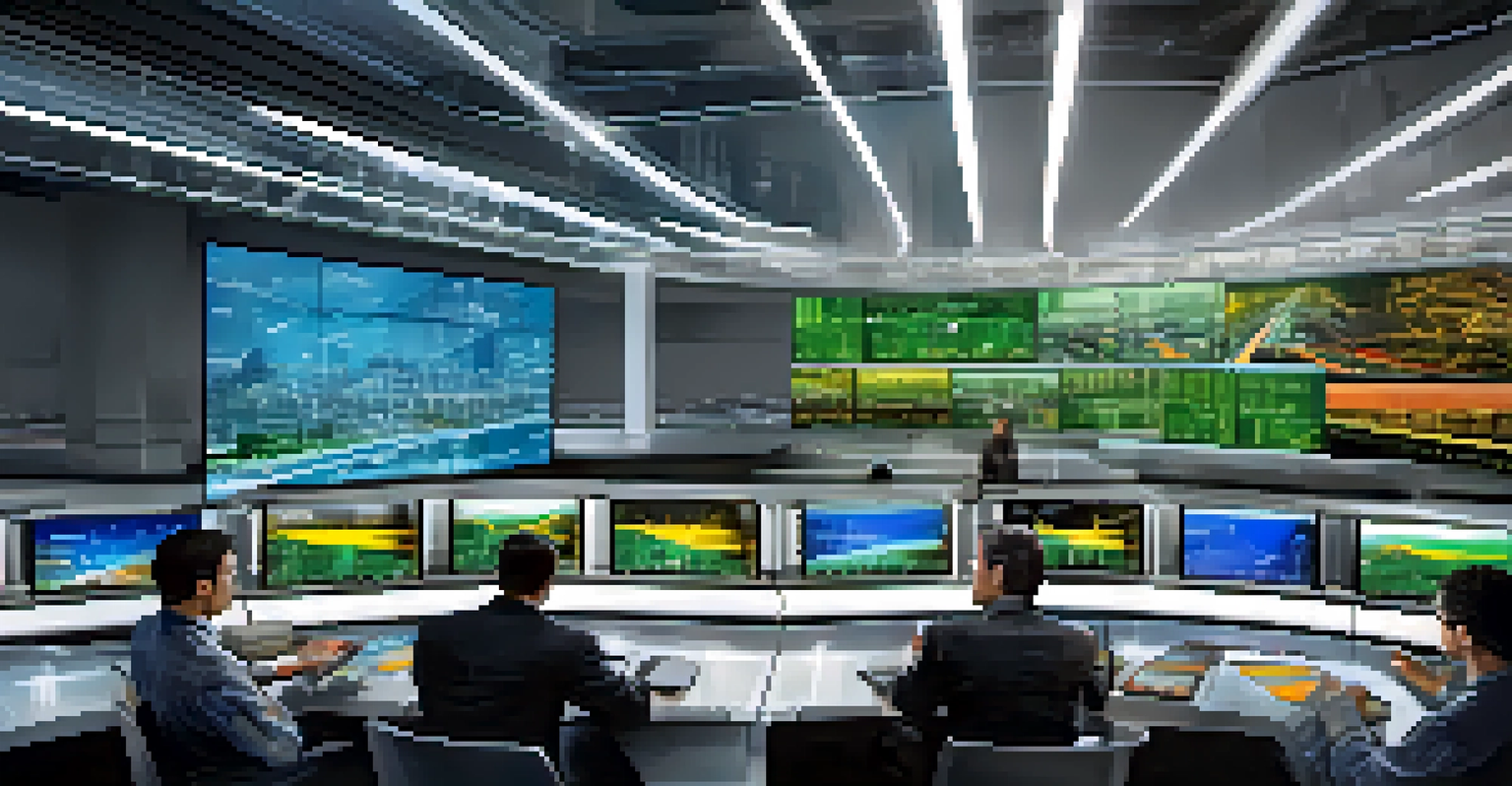Challenges Facing Utah's Transportation Infrastructure Today

Growing Population Strains Current Transportation Systems
Utah's population has been steadily increasing, leading to more vehicles on the road. This surge not only contributes to traffic congestion but also puts immense pressure on the existing transportation infrastructure. With more people commuting for work, school, and leisure, the demand for efficient transit options has never been higher.
The best way to predict the future is to create it.
As cities expand, the road networks are struggling to keep pace with the rapid growth. This often results in longer commute times and increased frustration among drivers. In many areas, the infrastructure simply wasn't designed to handle such a large influx of residents, creating a pressing need for improvements and expansions.
To address this challenge, local government and transportation authorities must prioritize infrastructure upgrades and explore innovative transportation solutions. Implementing smart traffic management systems and expanding public transit options could significantly alleviate congestion and improve overall mobility.
Aging Infrastructure Requires Urgent Upgrades
Much of Utah's transportation infrastructure is aging and in need of repair. Roads, bridges, and public transit systems that were built decades ago are now showing signs of wear and tear. This deterioration not only affects safety but also impacts the efficiency of transportation throughout the state.

State and local officials must confront the reality that maintaining these aging systems is crucial for the well-being of Utah residents. Failure to address these issues could lead to more significant problems down the line, including costly emergency repairs and potential accidents. Regular maintenance and timely upgrades are essential to ensuring safe travel for everyone.
Population Growth Affects Transit
Utah's increasing population is straining transportation systems, leading to heightened traffic congestion and a pressing need for improved infrastructure.
Investing in modern infrastructure can be a significant challenge, especially with limited funding and competing budget priorities. However, creating a long-term plan that includes funding for regular maintenance and upgrades can ultimately save money and improve safety in the long run.
Traffic Congestion: A Daily Challenge for Commuters
Traffic congestion has become a daily reality for many Utahns. Major highways and city streets often experience bottlenecks during peak hours, leading to frustrating delays. This not only affects individual commuters but also has broader implications for businesses and the economy.
Sustainability is no longer about doing less harm. It’s about doing more good.
As travel times increase, productivity can decrease, impacting everything from work schedules to delivery times. Moreover, idling in traffic contributes to higher fuel costs and increased emissions, which are detrimental to both the environment and personal finances. Addressing traffic congestion is essential for improving the quality of life in Utah.
Potential solutions include enhancing public transportation options, promoting carpooling, and developing more pedestrian-friendly infrastructure. By investing in these alternatives, Utah can work towards reducing congestion and creating a more efficient transportation system.
Environmental Concerns Impacting Transportation Policies
Environmental issues are increasingly influencing transportation policies in Utah. As concerns about air quality and climate change grow, there is a push for more sustainable transportation options. This shift requires a reevaluation of current practices and the development of eco-friendly alternatives.
The challenge lies in balancing economic growth with environmental responsibility. While expanding infrastructure can support a growing population, it must be done in a way that minimizes ecological impact. This includes investing in public transit systems, biking paths, and pedestrian infrastructure that encourages less reliance on personal vehicles.
Aging Infrastructure Needs Upgrades
Much of Utah's transportation infrastructure is outdated and requires urgent repairs to ensure safety and efficiency for residents.
Engaging the community in discussions about sustainable transportation options can help foster a sense of ownership and responsibility. By prioritizing environmental considerations, Utah can create a transportation framework that not only meets current needs but also preserves the natural beauty of the state for future generations.
Funding Limitations Hindering Transportation Improvements
One of the most significant challenges facing Utah's transportation infrastructure is funding. With limited state and federal resources, finding the money to support necessary upgrades and expansions is a constant struggle. Budget constraints often lead to tough decisions about which projects move forward and which are delayed.
Many transportation projects require substantial investment upfront, and without a strategic funding plan, essential improvements may never see the light of day. This can create a cycle of deferred maintenance, where existing infrastructure continues to deteriorate due to lack of funds. Consequently, longer-term planning is crucial for securing the necessary resources.
Exploring innovative funding solutions, such as public-private partnerships or dedicated transportation taxes, could help alleviate some of the financial burdens. By diversifying funding sources, Utah can work towards a more robust and sustainable transportation system.
Public Transportation: A Key Component Yet Underutilized
Public transportation in Utah has the potential to significantly reduce traffic congestion and promote sustainability, yet it remains underutilized. Many residents are hesitant to abandon their cars due to concerns about convenience, reliability, and coverage. To make public transit a viable option, improvements must be made to attract more riders.
This includes enhancing the frequency and reliability of services, as well as expanding routes to cover underserved areas. Additionally, creating a seamless connection between different modes of transportation, such as buses, trains, and biking facilities, can encourage more people to choose public transit over personal vehicles.
Funding Challenges Delay Improvements
Limited funding resources hinder necessary upgrades and expansions of Utah's transportation systems, creating a cycle of deferred maintenance.
To boost public transit use, community outreach and education are vital. Highlighting the benefits of public transportation—such as reduced costs, less stress, and environmental impact—can help shift perceptions and encourage more Utahns to make the switch.
Technological Innovations Offering Potential Solutions
Technological innovations hold great promise for addressing some of the challenges facing Utah's transportation infrastructure. From smart traffic signals to mobile apps that provide real-time transit updates, technology can enhance the efficiency of existing systems. By integrating new tools, Utah can create a more responsive and adaptive transportation network.
Moreover, advancements in electric vehicles and autonomous driving technology present exciting opportunities for the future of transportation. These innovations could lead to a reduction in emissions and a more streamlined transportation experience. However, the successful implementation of these technologies requires careful planning and investment.

Collaboration between government agencies, private companies, and the community is essential for maximizing the benefits of technological advancements. By embracing these innovations, Utah can work towards a future where transportation is not only efficient but also environmentally friendly.